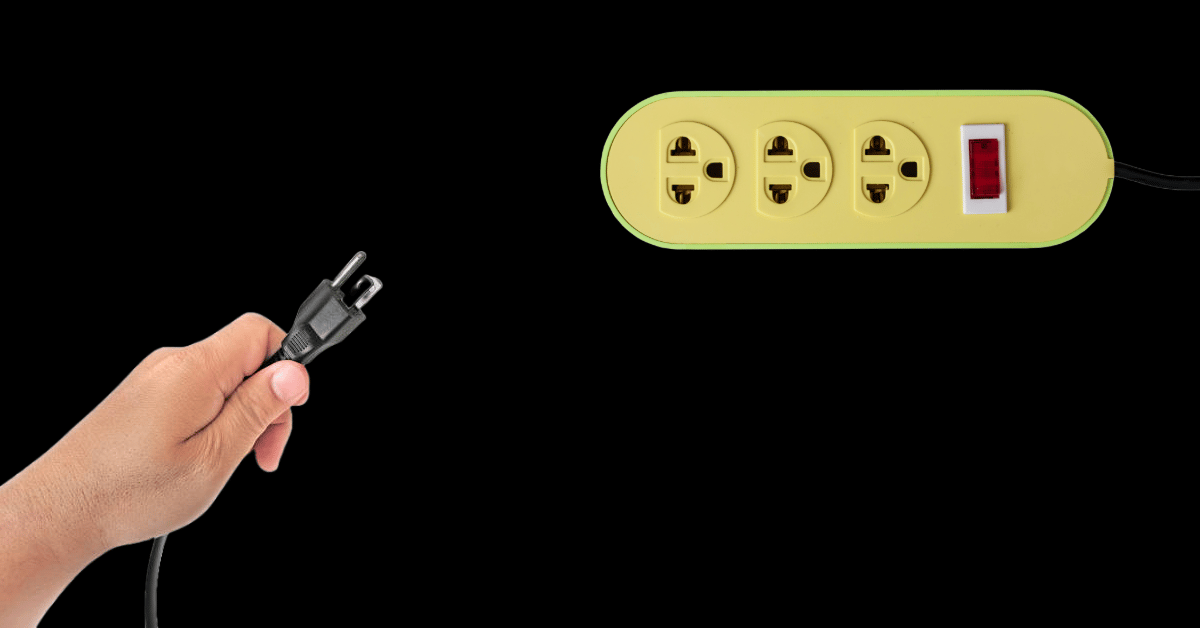Together with

ChatGPT is quickly making the saying "just Google it" obsolete.
More and more of us are heading straight to Chat to find out what that rash on our foot is. But rather than just giving us answers in the chat, the platform is now sending web traffic elsewhere, with ChatGPT Search now seeing over a billion queries per week. It’s clear that how we look for answers to our burning questions, but more importantly products and services, has changed.
- Charlotte Ellis, Editor ♡
PRESENTED BY PLANABLE
Vanity metrics are a trap. Here’s how to escape.
You’re tracking reach, likes, and comments. But knowing your numbers isn’t enough if you don’t know how to use them.
In this free 1-hour session, Sophie Miller, founder of Pretty Little Marketer (400k+ audience), breaks down what social metrics actually mean, and how to use them to grow your brand on purpose.
You’ll learn how to:
✅ Decipher the metrics that matter (and ditch the vanity ones)
✅ Use audience feedback to shape smarter content
✅ Spy on your competitors—and steal what works
💡Plus: how to use sentiment, benchmarks, and engagement data to guide your content, not just report on it.
👇 Ready to turn your data into strategy? 👇
WHAT’S HAPPENING IN MARKETING TODAY?
ChatGPT shares its traffic, “Please ignore it” campaign raises awareness for Tourettes & Popsicle brand makes “Yes Day” kit

ChatGPT has become a full-on search engine.
ChatGPT was designed to respond to prompts, not provide actual search results. In the past, OpenAI has found itself in murky waters as publishers like The New York Times have accused the tech company of scraping their content without crediting the source. However, since OpenAI added search functionality in October 2024, the site is directing users to sites like The BBC, Fox News and The Independent. In fact, the traffic it has sent to publishers' sites has doubled since January.
According to OpenAI, ChatGPT Search now sees "over a billion queries a week." Google still sends 3X the traffic to outside sites compared to Chat. But if you're smart, you'll be thinking about how to optimise your web content so your brand shows up when your audience is asking ChatGPT to help them find a product or service like yours.
Please Ignore It raises awareness about how to respond to Tourette's Syndrome.
Most awareness campaigns want to draw our attention to something we may otherwise miss. But Saatchi & Saatchi have just created a campaign that encourages us to not pay attention. Just in time for Tourette’s Awareness Month, Please Ignore It highlights why not pointing out a tic is actually the best way to respond.
The OOH campaign features bold, colourful imagery, which is meant to show how tics can often be impossible to ignore. However, the copy. "Please Ignore It" reminds the public that drawing attention to tics make the person suffering from Tourette's even more stressed. According to Chief Creative Officer Steve Cochran, “An ad asking you to ignore it means you can’t help but pay attention. This irony makes the message all the more potent, helping educate people about Tourette’s and how to behave around it.”
Frozen treat brand helps parents create a "Summer of Yes" with new campaign.
The best campaigns don’t invent problems. They tap into the ones we’re all silently screaming about. Like the fact that parenting in summer is just an endless loop of “no”. No more snacks, no more screens, no glitter glue at 7am (IYKYK). US-based “better for you” frozen treat brand, GoodPop has already tapped into an industry that is expected to hit $196.3 billion by 2035. And now, they've launched an entire campaign around helping parents say “yes”. Their Yes Day kit includes games, snacks, and wellness goodies, curated with other family-friendly brands in the no-guilt-because-it’s-better-for-you niche.
The idea is simple: you only need to say “no” to the bad. But this? This is good, and you have permission to say “yes” AND still be a good parent. Half the population sold right there. It's a reminder that you don’t need a trend forecast to spark a campaign. Sometimes all it takes is hearing a collective “UGH” from the crowd, and building something that feels like a hug. Or at least half a chance to be the cool parent.
- Charlotte Ellis, Editor & Helena Masters, Copywriter
DEEP DIVE
How non-techies are building the internet (and how you can, too)

There was a time (not that long ago) when building something on the internet required either (a) a team of highly skilled developers or (b) the patience of a saint and 600 hours of YouTube tutorials.
If you didn’t speak fluent Python? You stayed in your lane. Maybe wrote a blog. Maybe managed a Mailchimp list. But building a slick product or launching a platform? That was for the “technical” folks. You know, the ones with GitHub profiles and MacBooks covered in stickers that say things like “fail fast, ship faster.”
Well, those days are over. Because the rise of no-code tools has made one thing very clear: creativity is the new technical skill.
No-code platforms like Webflow, Framer, Zapier, Tally, and Glide have quietly (and not so quietly) kicked down the doors to what used to be a very exclusive club.
And they’re giving regular humans the power to build things that used to require entire dev teams. You want to launch a landing page? Done baby. Create a gated course? Easy money. Automate your lead gen? Sure, here’s a workflow. Spin up an entire productised service? Welcome to your new stack. All without writing a single line of code.
And no, it’s not “cheating.” It’s liberation. Like taking off your bra after a long ass day. The no-code movement goes beyond nifty productivity hacks and pretty dashboards. It’s a big ol’ middle finger to gatekeeping in tech.
It’s about access. Equity. Autonomy. Agency. And giving people tools they can actually use without needing a Computer Science degree or $10K/month in dev retainers. No-code is democratising tech (woooo!) And baby, the revolution will be drag-and-dropped.
So, you might be wondering, “What tf does this have to do with me, as a marketer?” Glad you asked. Because no-code tools are basically a cheat code for marketing efficiency, experimentation, and scale.
So, here's how to wield them like the badass marketer you are:
1. Build or test a landing page in a day! Use Webflow, Framer, or Carrd to create high-converting pages without waiting 6 weeks for dev. A/B test copy. Swap CTAs. Move fast. Iterate faster.
2. Automate lead gen and nurture work flows. Zapier + Tally + Notion = a self-updating CRM and follow-up system. You can route leads, trigger emails, and even notify yourself on Slack when a hot lead fills out your form. Sexy, no?
3. Create content hubs or resources. Use Notion or Softr to build searchable libraries, digital resources, or client portals. No dev. No stress. Just good UX.
4. Launch MVPs without breaking the bloody bank. Test an idea without building the whole damn thing. Use Glide or Bravo Studio to create lightweight apps and see if anyone bites. Validate first. Then scale.
5. Set up airtight reporting dashboards. Use Airtable or Notion databases connected with Make/Zapier to auto-pull data into clean, shareable dashboards for your boss, your client, or just your own Type A brain.
No-code doesn’t mean “no effort.”
You still need ideas. Taste. Strategy. But what it removes is friction. Dependency. Red tape. Now you don’t have to beg dev to update a form or build out a new idea. You just do it yourself. It’s not about skipping steps. It’s about owning the process. And for marketers, creators, and small business owners - that’s the freaking dream.
So, is no-code “real tech” ?
Yes. And if anyone tells you otherwise, ask them how long it took to build their last product. Then show them what you did in 48 hours with Notion, Zapier, and a playlist of early 2000s bangers xo
-Sophie Randell, Writer
TREND PLUG
Let’s talk about my outfit

Today's trend originates from a clip featuring singer and TV personality Adrienne Bailon-Houghton.
In the audio, she says, "Let’s get back to talking about my outfit," which has been adopted by creators to show anything off with a humorous or dramatic flair. Obviously, this has mostly been used for actual outfit show-offs, making it a great one for fashion creators. But there's so much scope to extend this to any reveal, whether it be an actual product, a brand refresh, “limited time” seasonal branding or to launch your personal brand.
How you can jump on this trend:
Slap the audio over a video of you dramatically showing something off. Even better if it’s not actually that deep or is obviously underwhelming – the irony does the heavy lifting.
A few ideas to get you started:
When you’ve nailed the brief, but nobody’s commented
Your new logo you spent 100 hours on, but nobody can see the difference
Line up your new seasonal packaging or limited-edition labels like it’s New York Fashion Week
- Helena Masters, Copywriter
ASK THE EDITOR

As the managing director of a SaaS startup, I've been building my brand on LinkedIn for a while now. Should I try to get my team to start posting, too? - Manny
Hey Manny!
I would absolutely get your team to start building their brands on LinkedIn. And they don't need to just talk about the work they do with you. Instead, I'd have them post stories about their personal journey. So this will sometimes relate to their work, and other times it might relate to their passions outside of work.
The reason it's good for them to post about other things beyond your business is that they are going to find their own audiences who relate to their content. This will give your brand more visibility and help you reach people who would never follow you on your personal LinkedIn. The challenge is going to get your team to actually post consistently. But if you can do that, you'll grow your brand's presence on LinkedIn exponentially!
- Charlotte, Editor ♡

